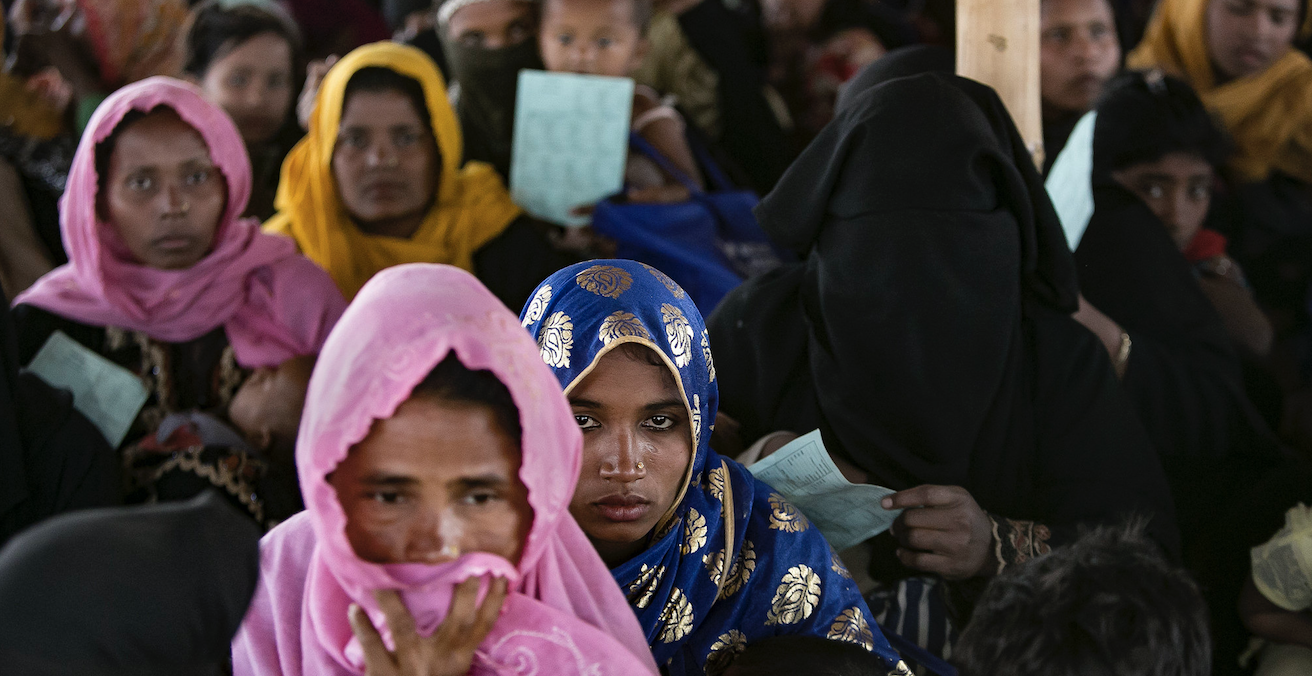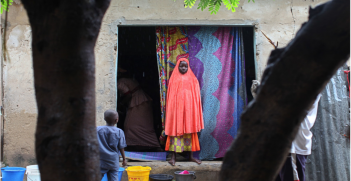Norm Negotiation in the Australian Government’s Implementation of UNSCR 1325

The conclusion of the Australian National Action Plan on Women, Peace and Security provides an opportunity to reflect upon achievements toward greater gender equality for conflict-affected women. This article is the winner of the Australian Journal of International Affairs’ 2020 Boyer Prize.
The Australian Government has repeatedly claimed its international reputation as a leader in implementing United Nations Security Council Resolution 1325 (UNSCR 1325). In 2012, the adoption of Australian National Action Plan on Women, Peace and Security (NAP) played a pivotal role in a successful campaign for a non-permanent seat on the Security Council (2013–2014), while this membership, in turn, presented a unique opportunity to secure this global leadership. The NAP is due for completion in June 2019 and the development of the second iteration has been underway. It is therefore timely to reflect upon what has been achieved since 2012 and how the second NAP can build on the strengths of the current policy and overcome its weaknesses.
It is important to understand how far and in what ways the Australian NAP has supported the achievement of the transformative ambitions of the Women, Peace and Security (WPS) agenda to bring about greater gender equality for conflict-affected women. In the most recent NAP monitoring report released by the Department of Prime Minister and Cabinet, Minister Michaelia Cash stated that Australia is “one of the leading nations on the implementation of the Women, Peace and Security agenda” with “enduring and steadfast commitment to gender equality.” Australia has thus far been the largest contributor to the Women’s Peace and Humanitarian Fund, the major international financing mechanism for the agenda. As of November 2018, Australia’s contributions amounted to US $3,072,945. This certainly is an expression of Australia’s commitment to progressing the agenda globally. However, feminist researchers and advocates pointed out the many shortcomings of the Australian NAP, including the lack of an overarching goal, uncoordinated implementation and the weak monitoring and evaluation framework.
Norm negotiation and the NAP
The Australian NAP offers an apt example of “norm negotiation.” The term was coined in response to criticisms around early constructivist theories of norm diffusion. Early constructivist research conceptualised international norm diffusion as a non-conflictual learning experience between “peer” states. It was suggested the acceptance of a given norm by a critical mass of states typically triggers the process of imitation which might lead to global diffusion and eventually norm internalisation. As a consequence, researchers essentially centred norm life cycle theory around “how the ought becomes the is.” While this and other constructivist theories appeared to be aware that diffusion can produce important variations to the international norm at national levels, they pictured it as a relatively linear process and left out the exploration of how the meaning of the norm might change throughout it.
Research has since emphasised the importance of defining and redefining the norm across all stages of diffusion: from norm emergence, through norm definition (negotiations within an advocacy network) and norm decision-making (text negotiations), to implementation negotiations. Combining constructivist theories with a negotiation perspective has ultimately called for attention to the unfixed and unstable meaning of international norms and how this might entail a number of unintended consequences, such as resistance to or moving from the initial intent. This dynamic is reflected in the term “norm negotiation” that underscores the importance of interactions between different stakeholders throughout the entire process.
In the context of the NAP, the transformative agenda has failed to diffuse vertically, and this has simultaneously encouraged horizontal diffusion. That is, the sophisticated discourse on gender equality presented in the narrative part of the NAP did not translate into a robust framework for action (vertical diffusion). This failure has, however, allowed the WPS agenda to be negotiated within individual implementing agencies (horizontal diffusion).
Vertical diffusion: failure to translate gender equality principles into a framework for transformative action
The WPS agenda failed to diffuse vertically within the Australian NAP. Even though the document laid out transformative ambitions to advance gender equality for conflict-affected women, these ambitions did not trickle down to the action matrix and the monitoring and evaluation framework. The document itself, while informative and evidently dedicated to gender equality principles, is only a weak instrument insufficient to account for an impact upon the lives of women in conflict zones. The failure to translate the sophisticated discourse on gender equality into a robust implementation framework is not limited to Australia but is relatively common for first-generation NAPs. In Australia, however, this weak implementation strategy has had a paradoxical consequence for government agencies. It has encouraged norm negotiation and tailoring WPS priorities to the institutional mandates of the departments, subsequently leading to significant policy development around UNSCR 1325.
Horizontal diffusion: norm negotiation within implementing agencies
The Australian NAP has provided limited guidance to the implementing agencies on how to operationalise the WPS agenda. The advancement of gender equality goals has therefore relied almost entirely on the leadership and capacity of the implementers, who might hold different views on how this should occur. The WPS priories have been bargained within individual government agencies in the absence of clear directions. My research suggests this lack of precision has enabled norm negotiation. The WPS agenda has diffused in different ways, connecting with distinct corporate priorities of the departments. While this has subsequently resulted in significant policy development in certain departments, the implementation practice has remained largely unfocused and its impact difficult to streamline and account for. Moreover, in some departments, this has opened a gate for disengagement from the NAP implementation altogether.
The implementation of UNSCR 1325 has evidently taken a vastly different course in the five major government departments with operational responsibilities under the Australian NAP. In the absence of clear directions in the document itself, the implementers have had the opportunity to negotiate WPS priorities with their departmental objectives (and sometimes personal ambitions). As a result, the impact of the NAP has been largely uneven within individual agencies.
In the Department of Foreign Affairs and Trade, the NAP has provided merely an additional incentive for gender equality efforts that have been ongoing. While the WPS agenda has diffused relatively broadly – easily connecting with pre-existing policies and the organisational culture – it has been slowly deprioritised since Australia concluded the Security Council’s non-permanent seat with the end of 2014.
By contrast, the Australian Defence Force (ADF) and the Australian Federal Police (AFP) have both utilised the WPS agenda to fill an important gap in international policy and operations with regards to gender mainstreaming. These departments ultimately demonstrated the most tangible progress in NAP implementation through international operations. The greater gender awareness among the deployed security personnel can be attributed precisely to the NAP. Yet domestically, the influence of UNSCR 1325 on the human resource management of the ADF and the AFP has been negligible and the links between the NAP and the cultural reform underemphasised. This holds true for the 2016 Defence White Paper which also missed the opportunity to establish a meaningful connection between the international and national implementation of the NAP.
Lastly, the Attorney-General’s Department (AGD) ruled out the NAP of contention, claiming its irrelevance to the department’s mandate. The current membership of Australia on the UN Human Rights Council (2018–2020) offers an opportunity to revisit the importance of UNSCR 1325 to the corporate priorities of the AGD and perhaps integrate the NAP into Australia’s reporting to the Convention on the Elimination of all Forms of Discrimination Against Women.
Norm negotiation in the NAP implementation has clearly produced significant opportunities for the advancement of gender equality particularly through the Australian Government’s engagements in conflict-affected countries. At the same time, however, this process has thus far left certain areas of the Government’s work untouched by the WPS agenda.
Beyond the NAP
The Australian NAP reflects the deeply political process in which it has been developed as well as implemented. The document itself – in its current shape – is inconsistent. The lengthy narrative part demonstrates a strong rhetorical commitment to gender equality, founded on a thorough gender analysis of conflict and peacebuilding and dedicated to delivering a transformative change to the lives of conflict-affected women. But while recognising the complexity around gender equality politics at a conceptual level, the NAP has thus far failed to facilitate the vertical diffusion of the transformative WPS agenda that is presented within the document. Nonetheless, the first Australian NAP has laid a foundation for the second iteration to deliver gender equality for women and girls in countries where Australia operates – if it can manage to move beyond the many challenges.
Dr Barbara K Trojanowska completed her PhD at the Monash University’s Research Centre for Gender, Peace and Security. Her research focuses on the United Nations Security Council Resolution 1325 and its implementation through national and regional action plans in Asia and the Pacific.
This is an extract of Trojanowska’s article in Volume 73, Issue 1 of the Australian Journal of International Affairs titled, “Norm Negotiation in the Australian Government’s Implementation of UNSCR 1325.” It is republished with permission.





